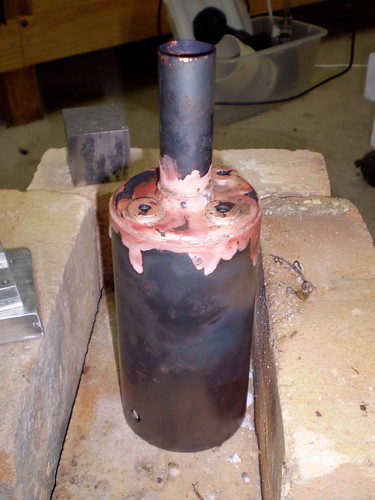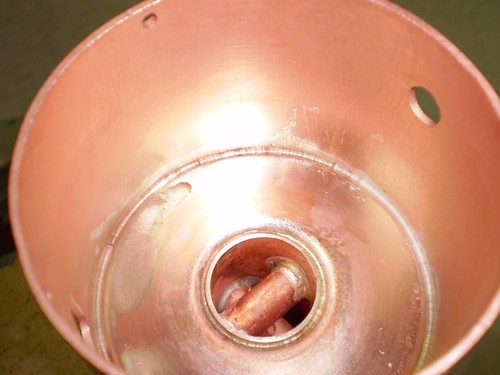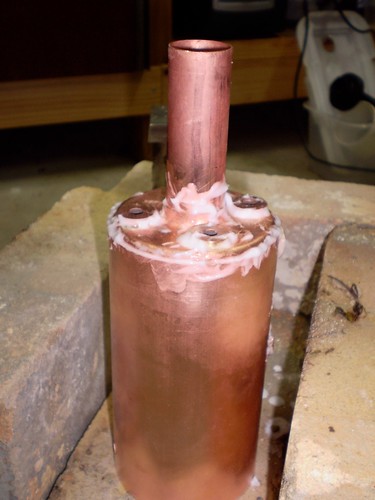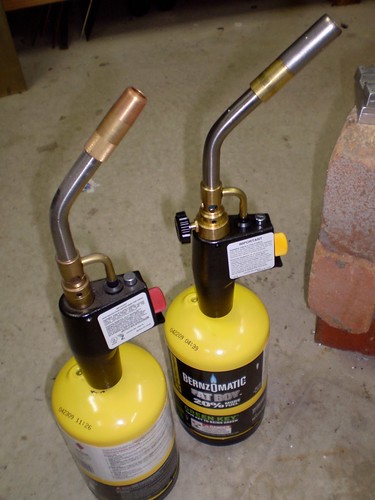I got bored one Saturday afternoon so decided to fire up the original steam engine I made. Here is some video I took with my iPhone whilst it was running.
Wednesday 16 December 2009
Sunday 6 December 2009
Boiler dissappointment....then success!
The saga of the boiler continues.....
After soldering the top plate on, I find that I missed a bit between the shell and the top plate!! (sorry for the quality of the photo).
Easy to fix - just more flux and heat and we are ready for hydro testing. Here is the set up; a couple of hours at the lathe gives me a bunch of blanking plugs (where did I put the ones I used last time??). These and the judicious application of teflon tape gives me a good seal. I fill the boiler to the top and put the last plug in. Two strokes of the pump and I am up to over twice working pressure (30 psi).
The pressure holds at just under 80psi for over two hours until I get told to remove all the paraphernalia from the kitchen bench. I call this a successful hydro test. All I have to do now is make all the fittings.....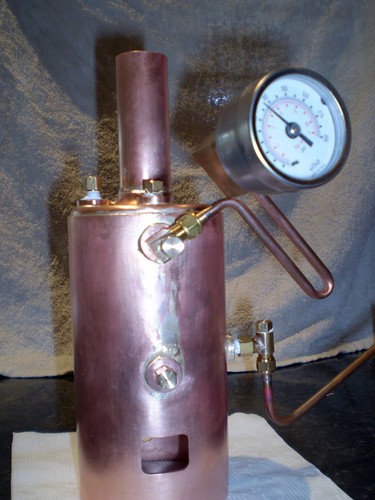
Thursday 3 December 2009
More Boiler Progress (cont)
Here are some pic of the latest progress. Here is a shot of the boiler sitting in the hearth after having the bottom tube plate soldered to the shell. The two lower bushings have been soldered in as well. The whole assembly was upside down for this operation and you can see how gravity assisted the distribution of extra silver solder. Better too much than not enough I suppose....
Here is a shot from underneath - nice fillet all the way around so good joints here.
Now we are going to solder the top tube plate on. So liberal with the flux...
...and apply the heat. I use two MAPP gas torches for this. One has a bigger burner than the other so this gets used for general heating and the other one gets used to supply local heat.
Here we are at black heat still. This will go into the pickle and if there are no visible problems it will be hydro tested.
